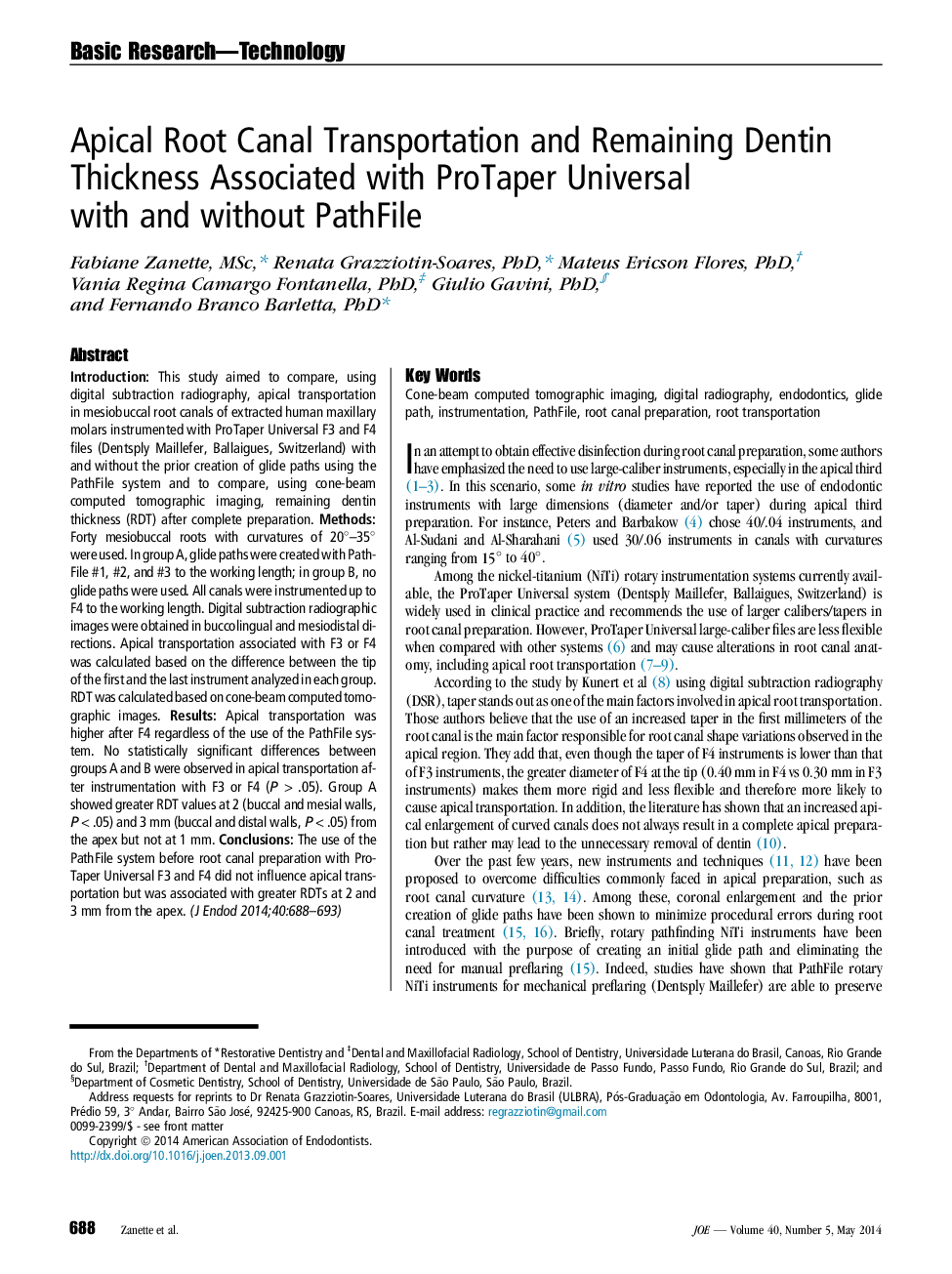| Article ID | Journal | Published Year | Pages | File Type |
|---|---|---|---|---|
| 3147903 | Journal of Endodontics | 2014 | 6 Pages |
IntroductionThis study aimed to compare, using digital subtraction radiography, apical transportation in mesiobuccal root canals of extracted human maxillary molars instrumented with ProTaper Universal F3 and F4 files (Dentsply Maillefer, Ballaigues, Switzerland) with and without the prior creation of glide paths using the PathFile system and to compare, using cone-beam computed tomographic imaging, remaining dentin thickness (RDT) after complete preparation.MethodsForty mesiobuccal roots with curvatures of 20°–35° were used. In group A, glide paths were created with PathFile #1, #2, and #3 to the working length; in group B, no glide paths were used. All canals were instrumented up to F4 to the working length. Digital subtraction radiographic images were obtained in buccolingual and mesiodistal directions. Apical transportation associated with F3 or F4 was calculated based on the difference between the tip of the first and the last instrument analyzed in each group. RDT was calculated based on cone-beam computed tomographic images.ResultsApical transportation was higher after F4 regardless of the use of the PathFile system. No statistically significant differences between groups A and B were observed in apical transportation after instrumentation with F3 or F4 (P > .05). Group A showed greater RDT values at 2 (buccal and mesial walls, P < .05) and 3 mm (buccal and distal walls, P < .05) from the apex but not at 1 mm.ConclusionsThe use of the PathFile system before root canal preparation with ProTaper Universal F3 and F4 did not influence apical transportation but was associated with greater RDTs at 2 and 3 mm from the apex.
